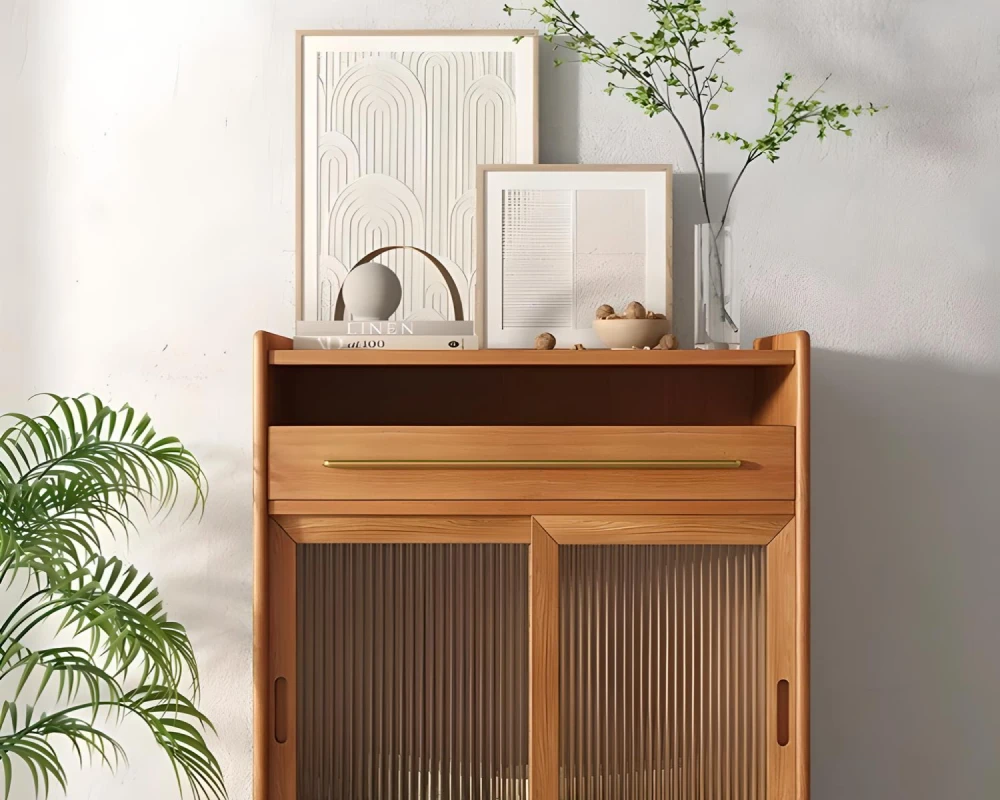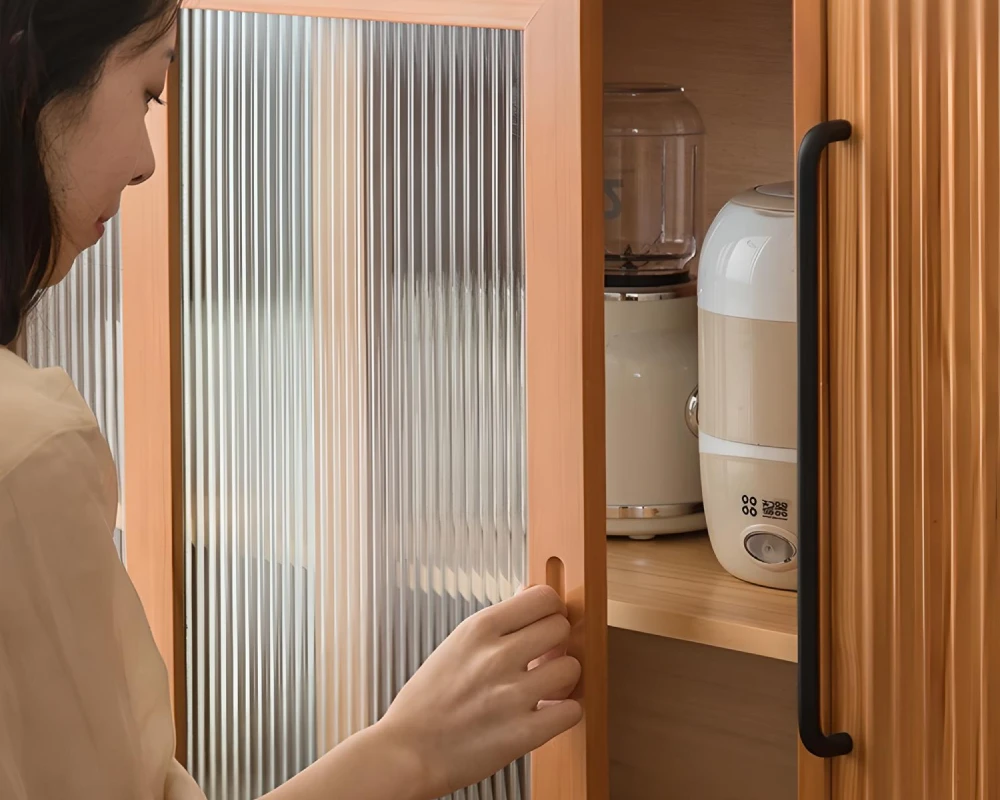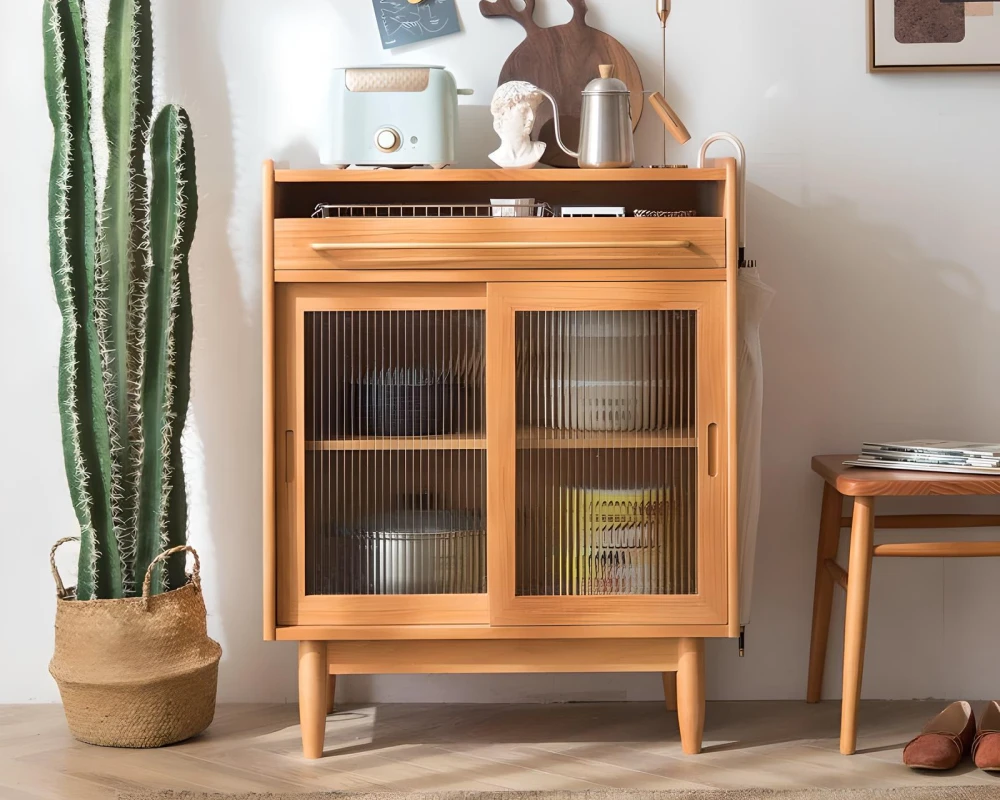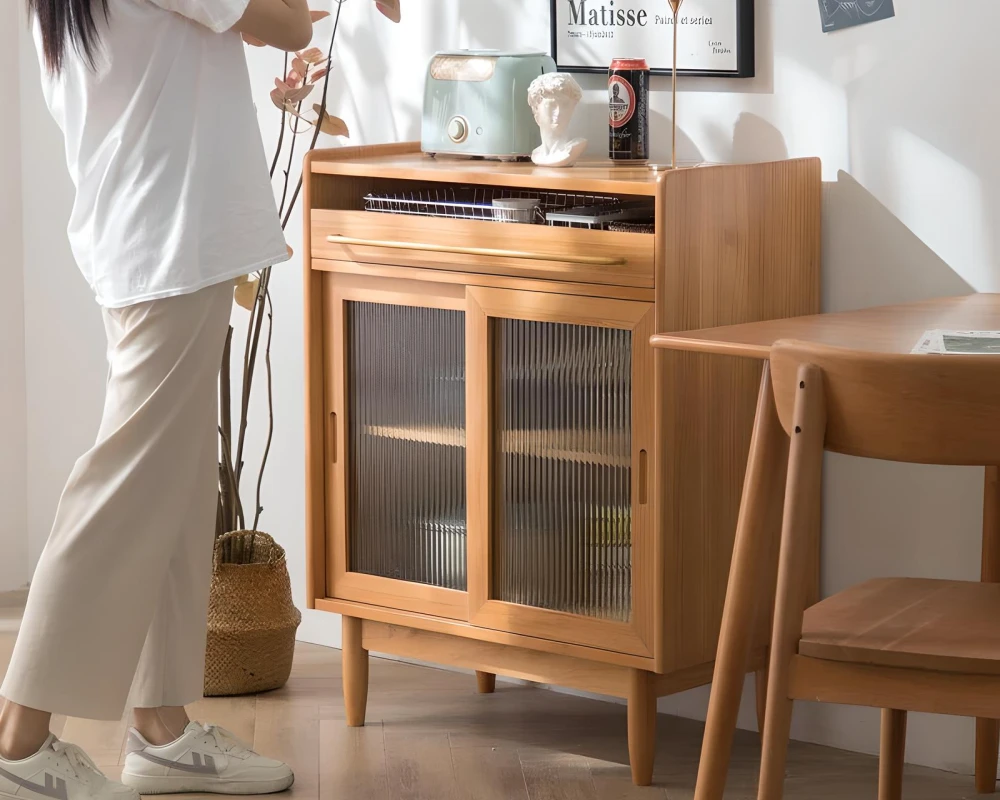Search

If you’ve ever found yourself puzzled by furniture terminology, particularly when it comes to storage pieces, you’re not alone. The question “what is the difference between a sideboard and a buffet?” often arises in home decor discussions. Let’s delve into this topic and clarify these terms once and for all.

A sideboard typically resides in dining rooms or living areas, offering both storage space and surface area for display purposes or serving food during gatherings. A key characteristic that differentiates it from other furniture pieces like buffets is its short legs or complete lack thereof.
Modern Minimalist Sideboard, an example of fine craftsmanship combined with utility, embodies these attributes perfectly. It sits low to the ground with ample interior compartments concealed behind sleek doors—a testament to its practicality without compromising aesthetics.
In contrast to sideboards, buffets usually stand taller due their longer legs. Originally designed as freestanding kitchen units before built-in cabinets became mainstream; they offer similar functionalities—storage plus extra surface area—but are traditionally associated more closely with meal service rather than displaying items.

The primary distinction lies not so much within physical characteristics but usage scenarios—”what is the difference between a sideboard and a buffet?” is often answered by how you intend to use the piece. Buffets are more dining-centric, while sideboards offer flexibility for various room settings.
The Modern Minimalist Sideboard embodies this versatility—it can seamlessly fit into your living space as a chic display unit or serve its traditional role in the dining area.
Your choice between these two should hinge on your specific needs. If you seek something primarily for meal service in the dining room, consider buffets. However, if versatility across rooms is what you need, sideboards like the Modern Minimalist Sideboard would be an excellent choice.
In recent years, there’s been a resurgence of vintage style elements alongside minimalist designs—a trend evident in jewelry choices as well as furniture selections (as discussed here: Why Chunky Vintage Earrings Are Making A Comeback). This blend of old-world charm with clean lines creates unique aesthetics that can elevate your home decor.
As we’ve explored the difference between a sideboard and a buffet, it’s clear that both have their unique features and uses. It ultimately boils down to personal preference, space considerations, and functionality requirements. Choose wisely!
The Modern Minimalist Sideboard is a perfect example of how sideboards can be both practical and stylish. With its clean lines, it offers an understated elegance that can enhance any room’s decor. Its ample storage space makes it highly functional, while its minimalist design ensures it doesn’t overpower other elements in your room.
When answering “what is the difference between a sideboard and a buffet?”, one must consider their personal needs and preferences as well as the available space in their home. While buffets are traditionally associated with dining rooms, they could also work well in open-plan living spaces where you need additional storage or display areas.
In contrast, sideboards offer more versatility—they can fit into various settings including hallways, bedrooms or even office spaces. The Modern Minimalist Sideboard, for instance, would look equally at home in a contemporary living room or as part of an eclectic bedroom setup.
Furniture pieces like sideboards and buffets should not only serve practical purposes but also contribute to your overall interior design scheme. It’s essential to strike a balance between aesthetics and functionality when choosing such items for your home.

In the ever-evolving world of home decor, versatility is a key trend. Furniture pieces that can adapt to different spaces and uses are highly sought-after. This article on essential travel companions (Never Forget Your Pills Again With This Essential Travel Companion) explains how multipurpose items have become increasingly popular, reflecting this shift towards adaptable living solutions.
Leave a comment